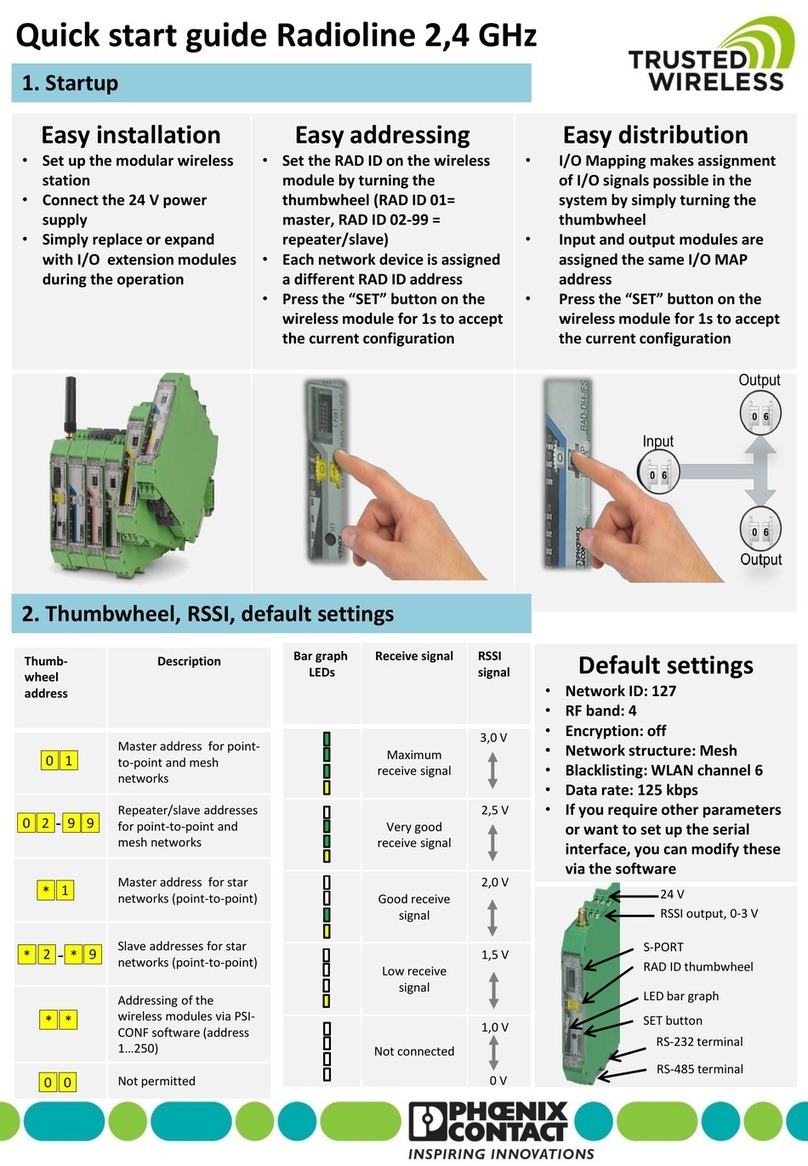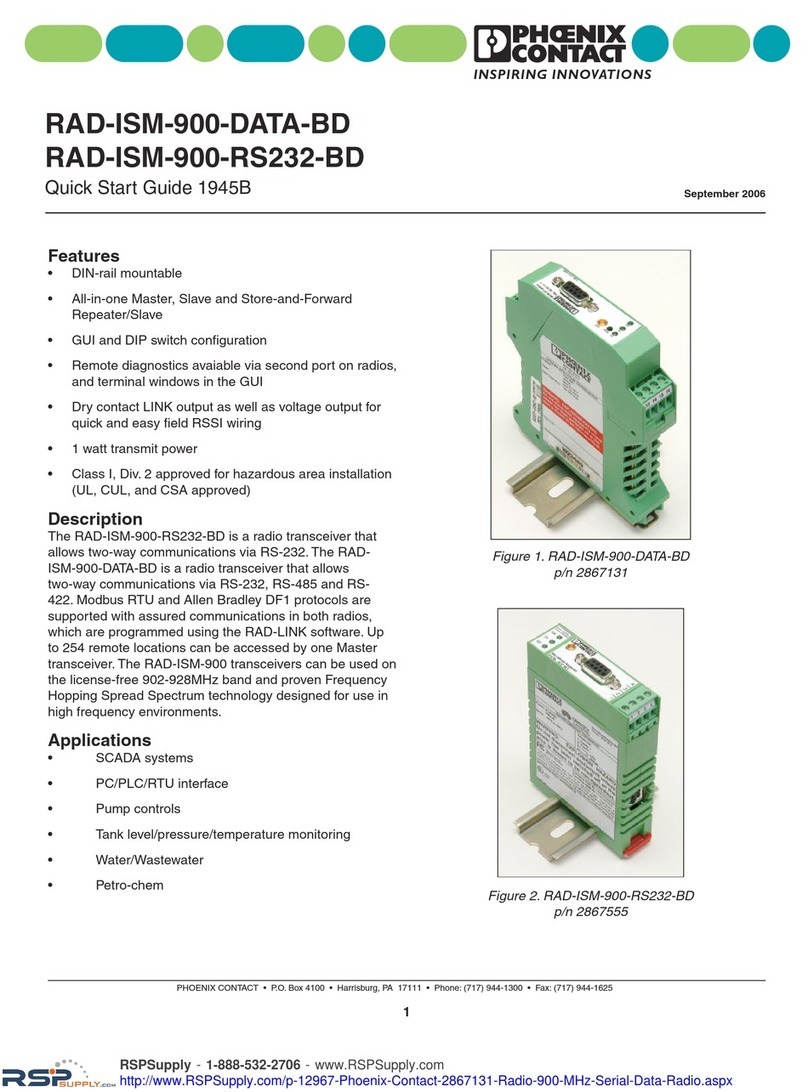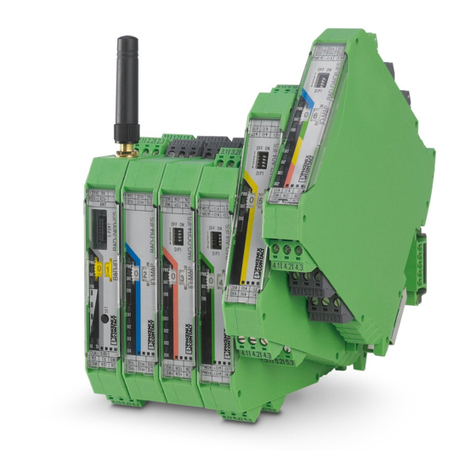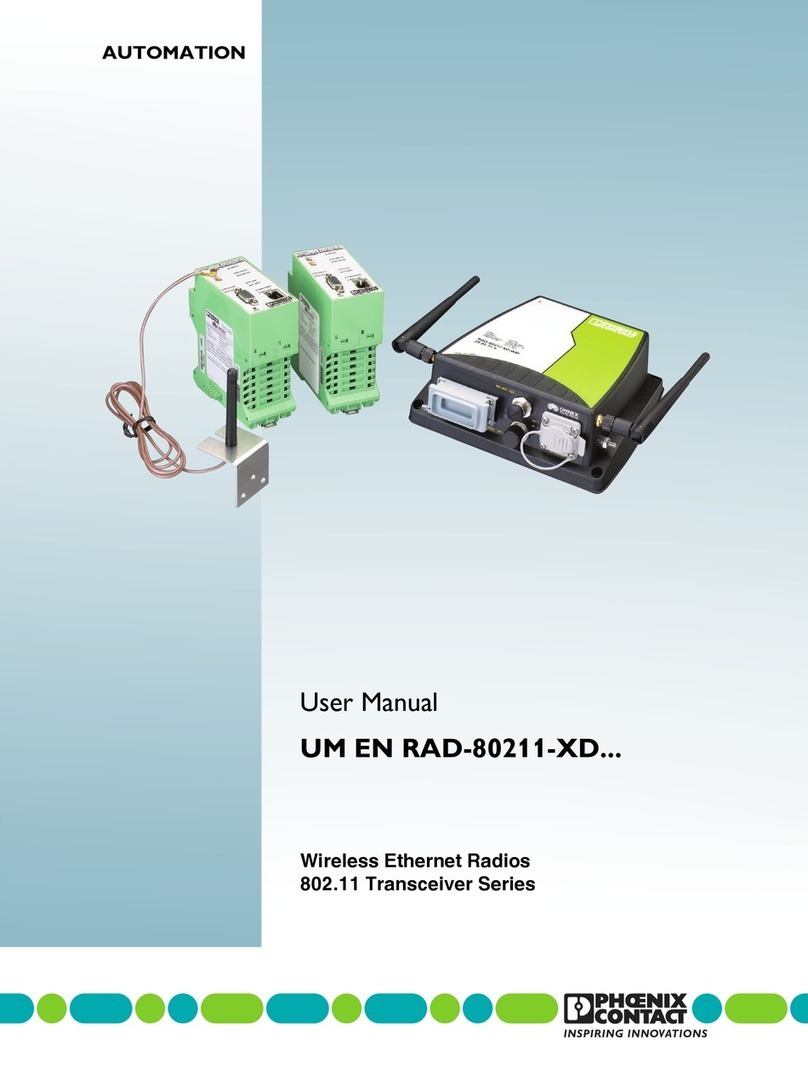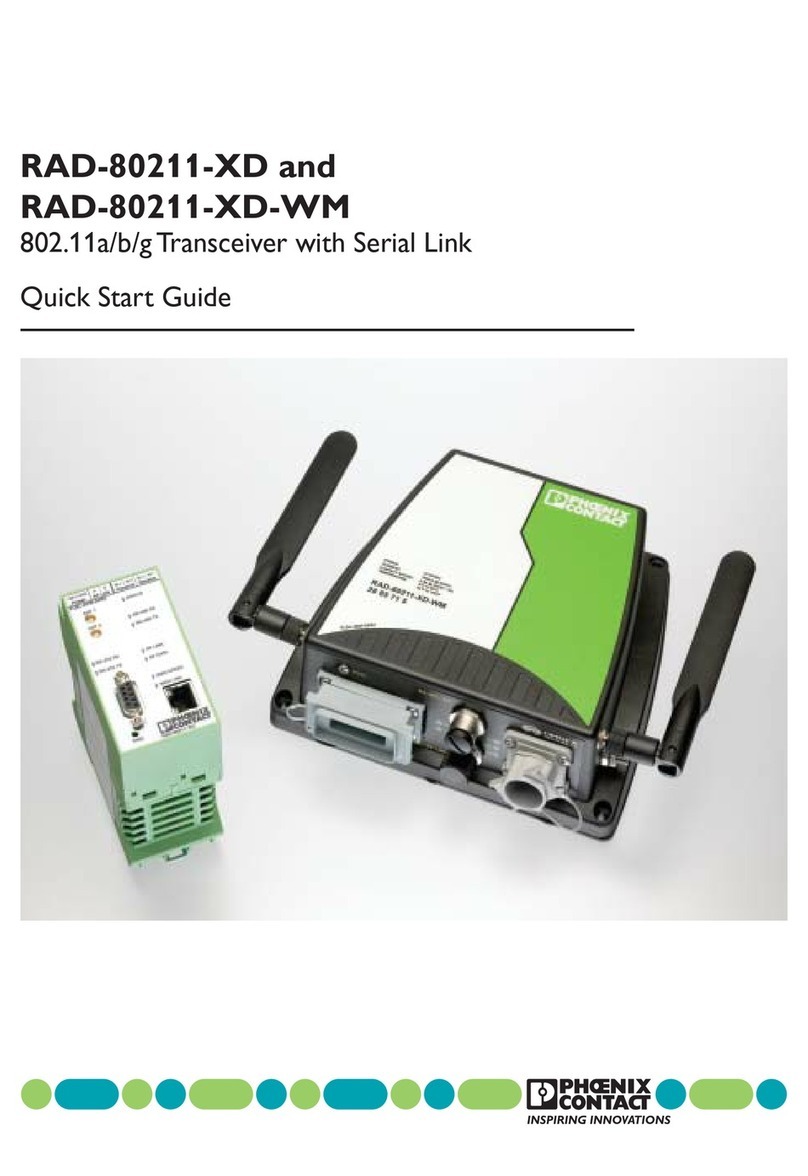Accessories Type Order No. Pcs. / Pkt.
Analog/digital I/O extension module with 2 digital inputs/outputs (0250 V
AC/DC) and 1 analog input (0/420 mA) and output (0/4 20 mA, 010
V), with screw connection, incl. DIN rail connector
RAD-DAIO6-IFS 2901533 1
Digital I/O extension module with 4 digital inputs (0250 V AC/DC), with
screw connection, incl. DIN rail connector
RAD-DI4-IFS 2901535 1
Digital I/O extension module with 4 digital relay outputs (6 A, 250 V AC/ 24
V DC), with screw connection, incl. DIN rail connector
RAD-DOR4-IFS 2901536 1
Analog extension module with 4 analog current inputs (0/4 mA ... 20 mA),
with screw connection, incl. DIN rail connector
RAD-AI4-IFS 2901537 1
Analog I/O extension module with 4 analog current/voltage outputs (0/4 mA
... 20 mA, 010 V), with screw connection, incl. DIN rail connector
RAD-AO4-IFS 2901538 1
DIN rail connector for DIN rail power supply unit, gold-plated contacts, for
DIN rail mounting, 5-pos.
ME 17,5 TBUS 1,5/ 5-ST-3,81 GN 2709561 10
Memory stick for saving individual configuration data for the Radioline wire-
less module
RAD-MEMORY 2902828 1
USB data cable (USB-A on IFS plug) for communicating between PCs and
PHOENIX CONTACT devices with an IFS data port, e.g., RAD-2400-IFS.
Power supply for diagnostics and configuration via the USB port of the PC.
Cable length: 2 m.
RAD-CABLE-USB 2903447 1
Antenna cable, 0.5 m in length; N (male) -> RSMA (male), impedance 50
ohms
RAD-PIG-RSMA/N-0.5 2903263 1
Antenna cable, 1 m in length; N (male) -> RSMA (male), impedance 50
ohms
RAD-PIG-RSMA/N-1 2903264 1
Antenna cable, 2 m in length; N (male) -> RSMA (male), impedance 50
ohms
RAD-PIG-RSMA/N-2 2903265 1
Antenna cable, 3 m in length; N (male) -> RSMA (male), impedance 50
ohms
RAD-PIG-RSMA/N-3 2903266 1
Adapter, N (female) -> N (female); insertion attenuation < 0.3 dB at 2.4 GHz RAD-ADP-N/F-N/F 2867843 1
Vulcanizing sealing tape for external protection of adapters, cable connec-
tions, etc. against the effects of weather, roll length: 3 m
RAD-TAPE-SV-19-3 2903182 1
DIN rail power supply unit, primary-switched mode, slim design, output: 24
V DC / 1.5 A
MINI-SYS-PS-100-240AC/24DC/1.5 2866983 1
Attachment plug with surge protection for coaxial signal interfaces. Con-
nection: N connector, female/female
CN-UB-70DC-6-BB 2803166 1
Attachment plug with Lambda/4 technology as surge protection for coaxial
signal interfaces. Connection: N connectors female connector/female con-
nector
CN-LAMBDA/4-2.2-BB 2800024 1
Antenna cable, 3 ft. in length, type N (male) to type N (male), 50 Ωimped-
ance
RAD-CAB-LMR240-3 5606169 1
Antenna cable, 10 ft. in length, type N (male) to type N (male), 50 Ωimped-
ance
RAD-CAB-LMR240-10 5606124 1
Antenna cable, 20 ft. in length, type N (male) to type N (male), 50 Ωimped-
ance
RAD-CAB-LMR400-20 5606125 1
Antenna cable, 25 ft. in length, type N (male) to type N (male), 50 Ωimped-
ance
RAD-CAB-LMR500-25 5606126 1
Antenna extension cable, length: 40 ft RAD-CAB-RG213-40 2867377 1
Antenna extension cable, length: 50 ft RAD-CAB-RG213-50 2867225 1
Antenna extension cable, length: 60 ft RAD-CAB-LMR400-60 2867380 1
